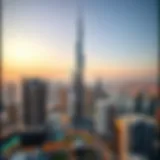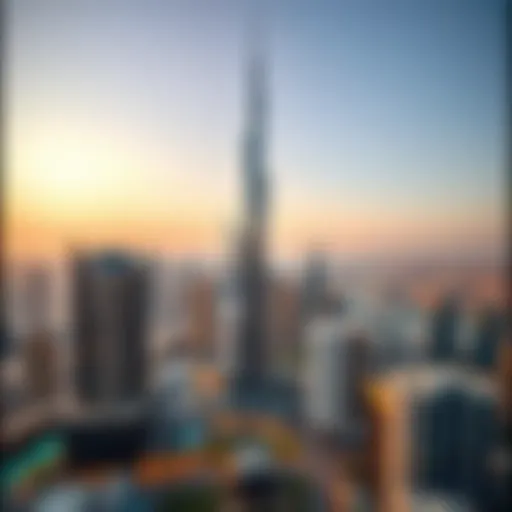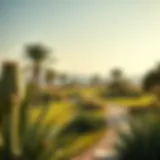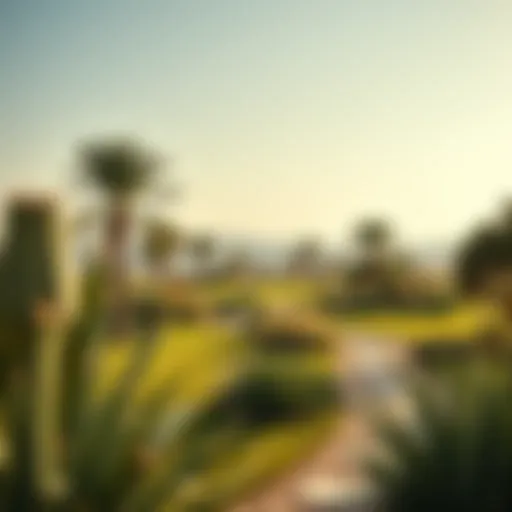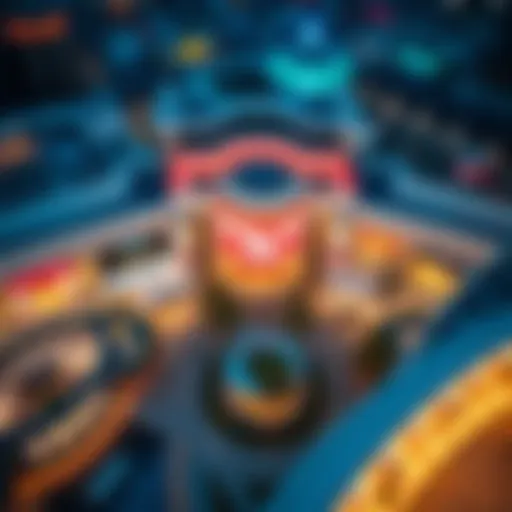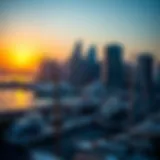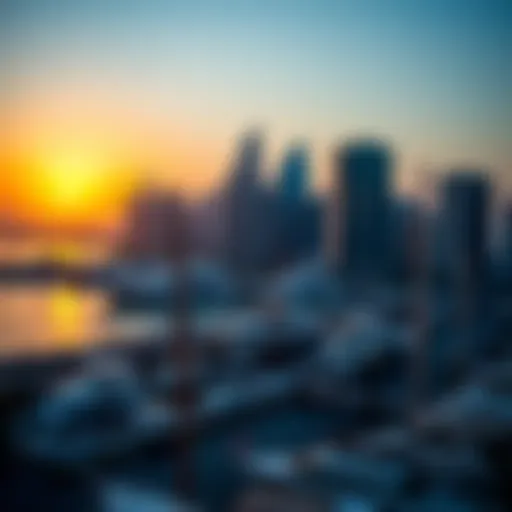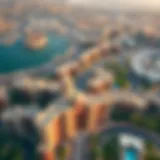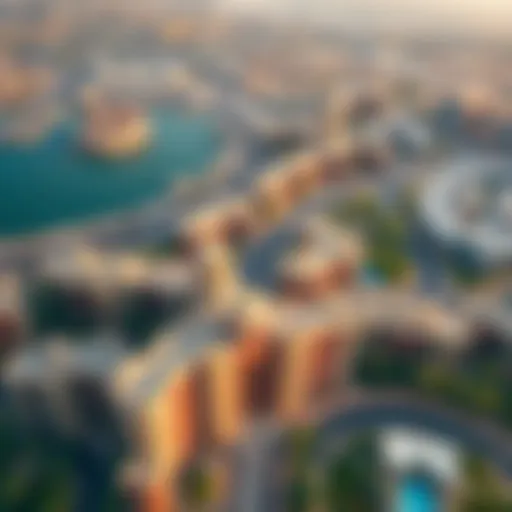Discovering Architectural Innovations in Dubai
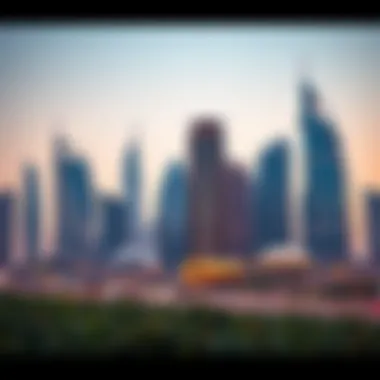
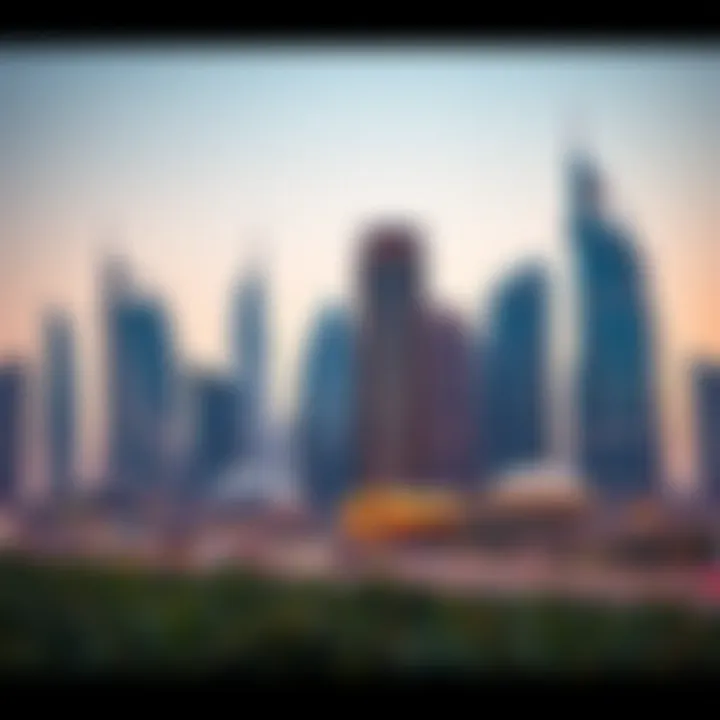
Intro
Dubai's skyline has become synonymous with architectural wonder and innovation over the past decades. As a melting pot of cultures, Dubai displays a blend of traditional and contemporary design that reflects not only its rich history but also its ambitious vision for the future. These monumental developments are not merely structures; they are statements—testaments to human ingenuity and ambition. In this article, we will explore the latest architectural advancements in Dubai, dissecting their styles, purposes, and significant impacts on the urban landscape.
The rapid pace of real estate development in Dubai suggests a city that refuses to rest on its laurels. Investors and policymakers are constantly seeking insights into market dynamics to make informed decisions. Thus, understanding the trends, property types, and upcoming forecasts in this vibrant city becomes essential. Through this discussion, we aim to shed light on the intricate tapestry of Dubai's architectural achievements, which not only serve as homes and workplaces but redefine the essence of urban living.
To navigate through this evolving landscape, we'll delve into current real estate trends, forecast future developments, and examine the various property types available. With a mix of grandeur and pragmatism, Dubai's offerings cater to a wide audience—from global investors and families looking for a home to local agents seeking emerging opportunities.
Let's begin by examining the broader Market Trends that shape the city's real estate narrative.
Prolusion to Dubai's Architectural Landscape
Dubai's architectural landscape stands as a testament to human ingenuity and economic ambition. Over the last few decades, the city has transformed from modest sand dunes to a dazzling metropolis that attracts millions of tourists and investors alike. Understanding the foundations of this architectural evolution is essential, not just for appreciating the aesthetic marvels but also for recognizing the socio-economic factors at play.
The Evolution of Dubai's Skyline
Dubai’s skyline is a patchwork of audacious designs and towering structures that reflect its rapid growth and refusal to conform to traditional design aesthetics. Prior to the 1990s, much of Dubai was characterized by low-rise buildings and a limited urban footprint. However, the oil boom catalyzed significant changes, leading to the advent of icons like the Burj Khalifa and the Burj Al Arab. These structures did not merely rise as engineering feats; they reshaped the identity of the city.
As the city has progressed, so too have its ambitions. The skyline today is more than just an architectural showcase; it signifies a bold vision towards the future. Each building tells a story—of cultural amalgamation, innovative engineering, or sheer luxury. The introduction of mixed-use developments and sustainable designs, such as the Dubai Sustainable City, illustrate a shift towards environmentally conscious urban planning.
The evolution of Dubai’s skyline is a reflection of broader trends in urban development, where cities across the globe look to balance modernization with sustainability. The comeback of traditional elements in modern designs also indicates a growing awareness of cultural heritage, factored into the magnesium of Dubai's futuristic aspirations.
Significance of Recent Developments
The recent architectural developments in Dubai are more than just eye candy; they carry significant implications for the local economy, community, and the environment. New structures like the Dubai Creek Tower illustrate the city’s commitment to attracting global tourism and investment. Each building contributes to Dubai's allure, bolstering its position as one of the most attractive spots for international investment.
Moreover, these developments respond to the needs of a diverse population. From sophisticated residential complexes to commercial hubs, the latest architecture often emphasizes mixed-use spaces that cater directly to the lifestyle of its residents. As demand for housing soars, incorporating community features such as parks and retail spaces within these developments becomes essential. This holistic approach is crucial for settling families and encouraging longer stays, thereby boosting the economy.
On the environmental front, the new wave of Earth-friendly designs serves as a clarion call for sustainability. Integrating green technology and following stringent regulatory standards, modern buildings aim to reduce carbon footprints while maximizing energy efficiency. This trend is not just beneficial for investors but resonates with socially conscious buyers, marking a step forward in creating a more sustainable urban ecosystem.
"The race to create the most visually striking buildings is a mere reflection of a city's ambition; the real triumph lies in enhancing the quality of life for its inhabitants."
Highlighting Iconic New Structures
The architectural scene in Dubai is not just about making buildings; it's about creating landmarks that tell a story. By highlighting iconic new structures, we take a closer look at developments that shape the identity of this bustling metropolis. These buildings often embody the aspirations, culture, and technological advancements that define the city. Analyzing these key landmarks serves to educate investors and homebuyers on the dynamics of their investment landscape, while offering insights into community impact and future growth prospects.
Burj Binghatti
Design and Architecture
Burj Binghatti is a veritable marvel on Dubai's skyline, merging traditional and contemporary styles seamlessly. Its unique design features an unprecedented height and whimsical design elements that make it stand out from the crowd. The key characteristic of this structure is its twisted form, which not only draws the eye but also enhances wind resistance—an engineering feat given Dubai’s climate. This architectural choice isn’t just about aesthetics; it provides practical benefits that can lower maintenance costs in the long run.
Investment Potential
The investment potential for Burj Binghatti is, without a doubt, impressive. This structure is being marketed not only as a residential building but as a lifestyle choice for those looking for luxury living amidst Dubai’s thriving economy. The high-end amenities and unique architectural features position it as a sought-after asset, especially for investors keen on capital appreciation. However, prospective buyers should be cautious as the luxury market can be vulnerable to fluctuations.
Community Impact
Burj Binghatti isn't merely a luxury tower; it enhances community engagement. It aims to redefine public spaces in its vicinity, offering parks and social areas that encourage interaction among residents and visitors alike. This characteristic can't be underestimated, as it contributes to community cohesion. However, one must also consider gentrification concerns, as such developments can sometimes price out long-time residents in the area.
Dubai Creek Tower
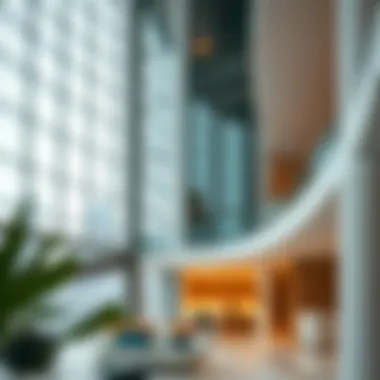
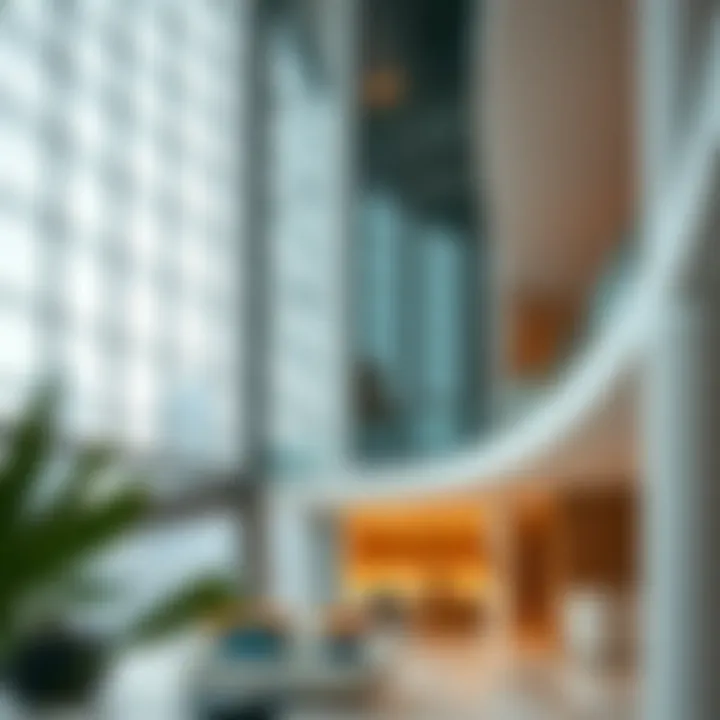
Architectural Features
Dubai Creek Tower aims to surpass the Burj Khalifa, showcasing stunning architectural features designed to blend with the natural environment. Its sleek, tapered form is reminiscent of a lily blooming toward the sky, an embodiment of both beauty and functionality. This aspect is crucial: it enhances visibility across the waterfront while making it a useful landmark that fosters navigation.
Projected Completion
While Dubai Creek Tower has generated excitement, completion has faced multiple delays, primarily due to the pandemic. This aspect becomes vital for investors; timelines can impact financial planning significantly. Understanding the projected completion timeline allows for better forecasting and investment strategies, making flexibility essential for those interested in this landmark.
Tourism and Economic Growth
Tourism plays a key role in Dubai’s economy, and Dubai Creek Tower aims to be a central attraction. With its projected visitor numbers, the tower is expected to catalyze economic growth in the surrounding areas. The implications for local businesses, from retail to hospitality, could be substantial. It's a double-edged sword; while growth can be invigorating, it also poses challenges such as potential over-reliance on tourism for sustainability.
One Za'abeel
Record-Breaking Aspects
One Za'abeel, currently under construction, is ambitious, seeking to break records as one of the tallest commercial towers in the world. This claim alone elevates its status, making it a focal point for global investors looking for prestige and visibility. The unique aspect of its design is the characteristic circular shape that is thought to maximize natural light, contributing to energy efficiency. This record-breaking ambition can be a strong selling point for businesses seeking to establish a flagship presence in Dubai.
Corporate Opportunities
The demand for corporate spaces has risen sharply in Dubai, and One Za'abeel is poised to capitalize on this trend. This distinctive structure will attract multinational corporations eager for premium office spaces with unparalleled views. However, prospective tenants must weigh the premium price points against their business metrics to ensure it aligns with their corporate goals.
Environmental Considerations
Sustainable design is pouring into the future of buildings, and One Za'abeel is no different. Utilizing cutting-edge technology and sustainable materials, it aims to lower its carbon footprint and set a precedent for future developments. The environmental considerations surrounding this tower reflect an emerging trend where profitability and sustainability go hand-in-hand, though the challenge remains in balancing green initiatives with upfront costs.
Understanding these iconic structures goes beyond bricks and mortar; it taps into the ethos and aspirations of Dubai as a city of the future.
Architectural Trends Influencing New Buildings
Dubai’s architectural scene isn’t just a visual feast; it's also a reflection of broader trends that shape the future of urban landscapes. As the city continues to expand, new buildings are being designed not only for aesthetic appeal but for sustainability and technological advancements. Understanding these trends is crucial for investors, builders, and homebuyers because they can greatly impact property values and societal benefits.
Sustainability in Design
Sustainability is not just a buzzword in Dubai; it’s becoming a fundamental aspect of architectural design. This approach redefines how buildings utilize energy, materials, and space. Modern architecture in Dubai increasingly emphasizes methods that reduce ecological footprints while enhancing quality of life for residents and visitors alike.
Green Building Practices
Green building practices are at the forefront of architectural trends today, focusing on the minimization of resources both in construction and operation. These practices enhance energy efficiency, lower water usage, and promote the use of non-toxic materials. A key characteristic of green buildings is their commitment to reducing carbon emissions. The unique feature here is the integration of solar panels and smart energy management systems, which not only support the environment but also save costs in the long run. Factoring in the growing global emphasis on sustainability, these buildings are becoming increasingly attractive to buyers who prioritize ecological responsibility.
Regulatory Standards
Dubai’s authorities have recognized the importance of sustainable construction and developed regulatory standards that promote environmental considerations in building projects. These regulations often require buildings to meet specific energy efficiency ratings and water conservation measures. A notable aspect of these standards is their alignment with international benchmarks, which can enhance the marketability of properties. However, compliance can drive up initial costs for developers, which might be seen as a disadvantage, particularly for smaller projects.
Benefits to Investors
Investors are particularly attuned to the benefits that come with sustainability. Properties that adhere to green building practices often achieve higher rental yields and attract premium tenants. Moreover, buildings designed with sustainability in mind can maintain their value better over time, even as market dynamics shift. A unique feature of these investments is that they can lead to favorable tax incentives, which can substantially improve the return on investment. Yet, investors should also weigh the sometimes-lengthy timeframes for approvals under sustainability regulations.
Integration of Smart Technology
The rise of smart technology is irrevocably changing the architectural landscape in Dubai. These advancements are engineered not just to meet today’s demands but also to anticipate future needs.
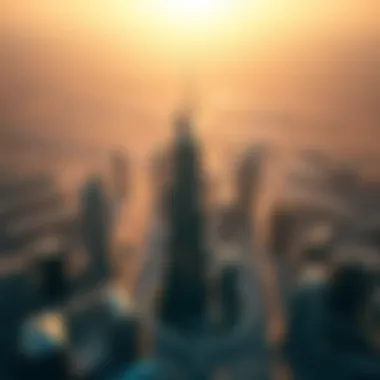
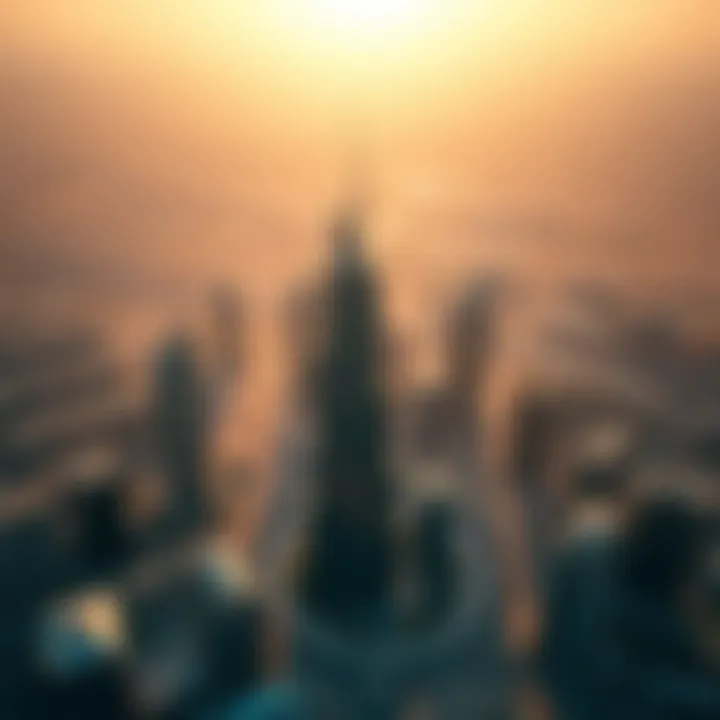
User Experience Enhancements
User experience enhancements are often integrated into new architectural designs, contributing to comfort and convenience for residents. These features can range from automated climate control systems to advanced home security applications that can be managed via smartphones. The distinct advantage of these technologies is the seamless integration into daily life, providing effortless control over living environments. However, initial setups might involve significant investments, which can deter some prospective buyers.
Safety and Security Features
Safety and security features are becoming standard inclusions in the architectural designs of new buildings. Advanced surveillance systems and smart locking mechanisms are common components. A hallmark of this trend is the implementation of artificial intelligence tools that can monitor and alert occupants to potential threats. These features not only enhance overall safety but can also lower insurance premiums for homeowners. However, as with ease of use, the equipment can also be costly to install and maintain.
Long-term Value
One of the driving forces behind the integration of smart technologies is the potential for long-term value appreciation. Properties equipped with the latest smart features are often viewed as more desirable, which can lead to a steady appreciation in property values. Key traits of these buildings include their ability to adapt to emerging technologies, ensuring that they remain relevant and valuable in the evolving market. Still, buyers must consider that rapid obsolescence in tech can pose risks if not continually updated.
In sum, the architectural trends shaping new buildings in Dubai serve various interests, from sustainability to smart technology, each contributing significantly to the urban fabric of the city. Stakeholders must actively engage with these trends to harness their potential benefits.
Economic Implications of New Developments
Understanding the economic implications of new architectural developments in Dubai is vital for several stakeholders, including investors, homeowners, and city planners. It shapes the financial landscape of the real estate market and offers insights into how these monumental projects can bolster or hinder economic growth. With Dubai rapidly evolving into a nexus of architectural innovation, being attuned to these economic factors can empower stakeholders to make informed decisions.
Impact on Property Prices
Market Comparisons
When looking at the property market in Dubai, comparisons with other global cities like New York or London are often inevitable. The price variations can be jaw-dropping, but what's intriguing is how these comparisons influence local prices. High-profile projects like the Burj Binghatti or Dubai Creek Tower attract attention and can create a trickle-down effect, pushing prices upward across the board. This phenomenon not only encourages investment but also entices buyers looking for luxury and prestige.
But a key characteristic of market comparisons is not just the glitz; it's also about how these projects can create pockets of affluence that are inherently buoyant. Buyers flying in from overseas frequently opt for neighborhoods close to these spectacles, which can jolt local prices. The unique feature of such market comparisons is their twofold nature—they can elevate nearby property values while simultaneously creating a gap between luxurious and mid-range housing, a dilemma often overlooked in enthusiastic discussions about growth.
Investment ROI
The return on investment (ROI) from these new developments is a hot topic among investors. A significant aspect here is the potential of properties to appreciate quickly due to their proximity to iconic structures. High-rise waterfront apartments or mixed-use developments adjacent to these landmarks promise not only immediate rental returns but also long-term value growth. The attractiveness of an investment in properties near such developments lies in their appeal to both tourists and professionals alike, driving demand through the roof.
However, potential investors should not overlook the challenge: the risk of oversaturation. While stunning architecture draws people in, there's a thin line between excitement and market overextension that can negatively impact ROI. These unique dynamics make investment in Dubai's property market both thrilling and potentially perilous.
Future Forecasts
Looking ahead, the forecast for Dubai's property market appears promising but must be navigated with caution. Analysts predict sustained growth driven by continuous influxes of talent and tourism, supported by the city’s ambitious plans for expansion. A critical characteristic of these forecasts is their basis on comprehensive data about market behavior, demographic shifts, and economic indicators. This data-rich approach equips stakeholders with insights that can guide their decisions wisely.
The unique feature of these future forecasts lies in their incorporation of upcoming mega-projects and how they might reshape local economies. Positive indicators can spell a boon not just for property values but also for ancillary sectors, such as retail and hospitality. Yet challenges remain, such as geopolitical factors or economic fluctuations, that may introduce volatility into the forecast. Thus, while the outlook is generally optimistic, prudence will always be necessary to avoid unintended pitfalls.
Employment Opportunities
Construction Jobs
The construction sector stands at the forefront of new developments, providing a plethora of job opportunities. This issue touches on the key characteristic of employment in the sector—it's not just about quantity but also about the mix of skills required. High-tech projects necessitate skilled professionals, from architects to engineers, making it a dynamic job market. The influx of construction jobs isn't merely a statistic; it's an infusion of life into local communities, giving people hope and purpose.
A unique feature is that these jobs generally offer competitive pay and benefits, attracting a diverse workforce from around the globe. However, rapid developments can also lead to staffing challenges, especially in a market where the demand consistently outpaces supply.
Service Industry Growth
As new buildings rise, they create a ripple effect on the service industry, leading to an explosion of growth in sectors like hospitality, retail, and maintenance services. A key aspect of this growth is its interdependence with the residential and commercial communities that these new structures attract. When more people arrive, the demand for services skyrockets, prompting businesses to expand and new ones to emerge. The unique upside is that local economies receive a significant boost as native service providers capitalize on increasing consumer demands. Conversely, the downside can be the risk of homogenization; while new chains may offer convenience, they could overshadow local shops, reducing the rich tapestry that makes Dubai so unique.
Skilled Labor Demand
The skilled labor market has become critical as Dubai’s ambitions grow. A salient characteristic here is the increased competition for specialized workers in fields such as construction technology, IT, and green architecture. Investors often find that hiring skilled talents can not only improve productivity but also enhance the overall quality of projects.
The unique feature of this demand is the offshoot of training programs and initiatives aimed at boosting local talent. While this strategy presents tremendous advantages like reduced reliance on foreign workers, it also poses challenges. Skilling up the local workforce is a long-term commitment and may take time to yield fruitful results.
Cultural and Social Considerations
The architectural scene in Dubai isn't just about going up, up and away, it also speaks volumes about the society and culture that thrives underneath those skyscrapers. This section unearths how contemporary designs echo the voices and aspirations of the local populace. In a melting pot like Dubai, where numerous cultures intersect, addressing social and cultural implications becomes crucial when creating spaces that resonate with both residents and visitors. The interplay of architecture and community sets a foundation for a more inclusive urban environment.
Community Engagement in Design
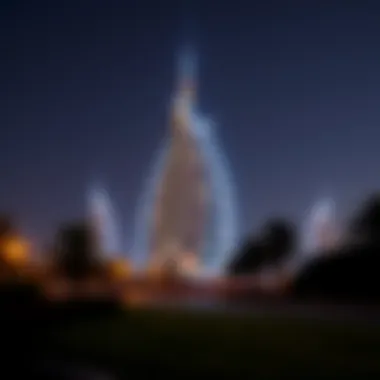
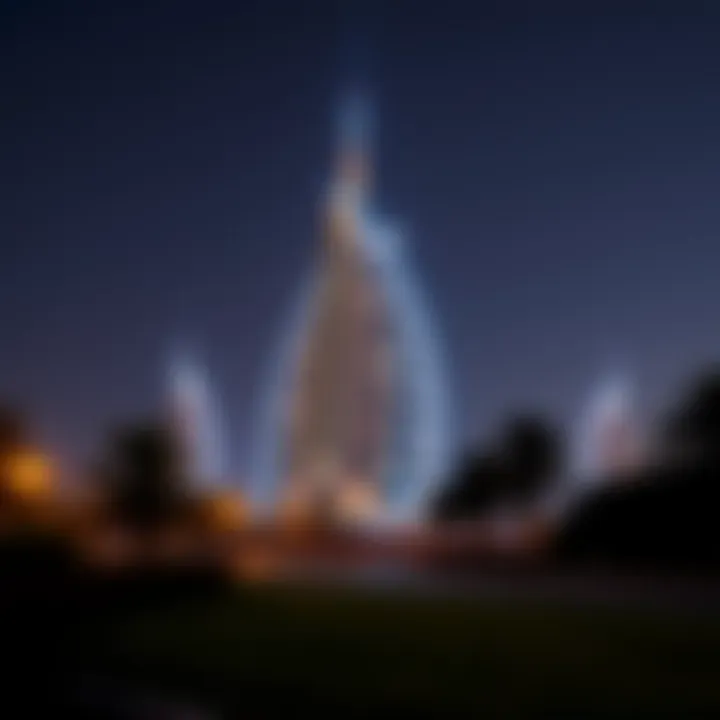
Public Spaces
Public spaces in Dubai have undergone significant transformations, serving as connective tissue between diverse communities. The integration of green areas, parks, and plazas not only promotes interaction but also enhances the livability of urban settings. A key characteristic of these spaces is their inclusivity, which allows people from all walks of life to converge and share experiences. For instance, consider the Al Fahidi Historical Neighborhood, where traditional architecture meets contemporary design, fostering a deeper appreciation for cultural heritage.
The unique feature of public spaces in Dubai is their multifunctionality. Local parks, such as Zabeel Park, not only provide recreational facilities but also host community events and exhibitions. This characteristic greatly benefits the community by creating opportunities for engagement and social cohesion. However, challenges remain, such as maintenance issues and ensuring that spaces are accessible to everyone.
Local Input in Development
Local input in development projects is another vital aspect in shaping Dubai's architectural landscape. Engaging community members in the design process ensures a sense of ownership and pride among residents. A defining characteristic of this approach is its collaborative nature, inviting feedback and suggestions that reflect the community’s wants and needs. For example, participation forums for upcoming developments allow citizens to voice concerns and contribute ideas, making it a beneficial practice for both developers and residents.
The unique feature of local input in development is its ability to cultivate trust between developers and communities. Building this rapport helps create buildings and public areas that cater effectively to the needs of the people who will use them, ensuring relevancy and sustainability. However, balancing the diverse opinions and desires of a multicultural populace can sometimes be a tough nut to crack.
Social Infrastructure
The provision of social infrastructure is an essential aspect of architectural development in Dubai. This includes facilities such as schools, healthcare centers, and community centers that support the fabric of society. A key characteristic of effective social infrastructure is its accessibility, providing essential services to a broad range of demographics.
Unique features of social infrastructure in Dubai often focus on adaptability. For instance, community centers that offer workshops or educational programs respond to the varying interests of residents. The advantages of integrating social infrastructure into architectural projects are manifold, as they nurture community bonds and enhance the overall quality of life. However, the challenge lies in ensuring that this infrastructure keeps pace with rapid population growth and urbanization.
Art and Cultural Reflections
Influence of Local Art
Local art plays a pivotal role in shaping architectural designs in Dubai, weaving cultural narratives into the fabric of new developments. A vital aspect of this influence is the incorporation of traditional art forms, like calligraphy and tile work, into modern buildings. This blend celebrates heritage while welcoming innovation, making it a beneficial practice for both developers and artists.
The uniqueness of local art's influence lies in its ability to tell stories that resonate with both locals and tourists alike. Art installations in public spaces or at the entrance of major buildings serve as landmarks that not only beautify but also communicate cultural messages. Despite the challenges of funding and competing styles, the presence of art elevates the aesthetic experience and enriches community identity.
Architectural Symbolism
Architectural symbolism is another critical aspect that shapes the perception of buildings in Dubai. Structures often incorporate symbolic designs that reflect cultural values or aspirations. A key characteristic of such symbolism is its ability to evoke emotional responses, connecting individuals to space on a deeper level. Iconic buildings like the Burj Khalifa are designed not only for their height but also to represent the ambition and resilience of Dubai's inhabitants.
The unique feature of architectural symbolism is its storytelling capability. It articulates narratives that foster a deeper connection between the city and its inhabitants. However, there lies the downside; if misinterpreted, symbolism can lead to misunderstandings or cultural disconnects, making careful consideration essential during the design process.
Cultural Sites Integration
Integrating cultural sites into modern architectural developments is a vital consideration that marries the old with the new. A fundamental aspect of this integration is preserving historical significance while accommodating contemporary needs. This approach encourages a narrative that honors the past while paving the way for future growth. It is popularly viewed as beneficial for both heritage conservation and urban landmark creation.
The unique characteristic of cultural sites integration is its ability to create a dialogue between heritage and modernity. For example, developments around the Dubai Museum not only respect historical legacies but also invite new activities and tourism. However, challenges such as zoning regulations and the risk of commercializing cultural sites can pose serious dilemmas. Striking a balance between development and preservation is key to fostering a vibrant, culturally rich urban landscape.
Finale and Future Outlook
In the ever-evolving architectural landscape of Dubai, the conclusion and future outlook serve as a critical lens through which to view ongoing and upcoming developments. The trending shifts not only showcase the creative prowess of architects but also cater to the economic and social dynamics at play in this vibrant city. By synthesizing the knowledge gleaned from recent architecture, one successfully grasps the broader implications for investments and community growth.
Predictions for Upcoming Projects
As the sands of time shift in favor of innovation, several upcoming projects demonstrate Dubai's relentless pursuit of architectural excellence. The current trends suggest a push toward not only height but also sustainability and smart technologies. Projects such as the Dubai Square, envisaged as a multi-billion-dollar retail and leisure destination, aim to reshape consumer expectations while ensuring environmental sustainability.
- Sky Gardens at Dubai Marina: This project promises to blend residential living with lush greenery, offering a refreshing escape amidst urban hustle.
- The Museum of the Future: With its eloquent design and focus on innovation, this structure is anticipated to become a landmark for visionaries and entrepreneurs.
- Dubai 2040 Urban Master Plan: Envisioned as an inclusive growth framework, this will prioritize living spaces, connectivity, economic centers, and emphasize green and sustainable urban planning.
These projects are likely to create opportunities for investors, pushing real estate values upward, while simultaneously catering to the changing lifestyles and preferences of residents.
Long-term Urban Development Strategy
The long-term urban development strategy embodies Dubai's ambition to foster a sustainable and resilient urban environment. Dhaka's formula for success hinges on globalization and local inclusivity, aiming to meld tradition with modernity. The initiatives under this strategy focus on key areas:
- Sustainable Urbanization: Creating green spaces, promoting public transport, and prioritizing energy-efficient buildings are crucial elements.
- Smart City Initiatives: Leveraging technology to improve urban living, such as IoT for smart traffic management, smart housing, and waste management systems.
- Community Engagement: Developing projects that resonate with local culture and enhance social infrastructure helps fortify community bonds.
Ensuring a coherent and strategic approach to urban development will strengthen economic ties, improve the quality of life for residents, and solidify Dubai's stature as a global architectural hub.
In summary, the aim of the current architectural trajectory in Dubai extends beyond mere skyscrapers and modernity. It seeks to harmonize lifestyle, economic growth, and sustainability, shaping a future where architecture serves the populace holistically.


